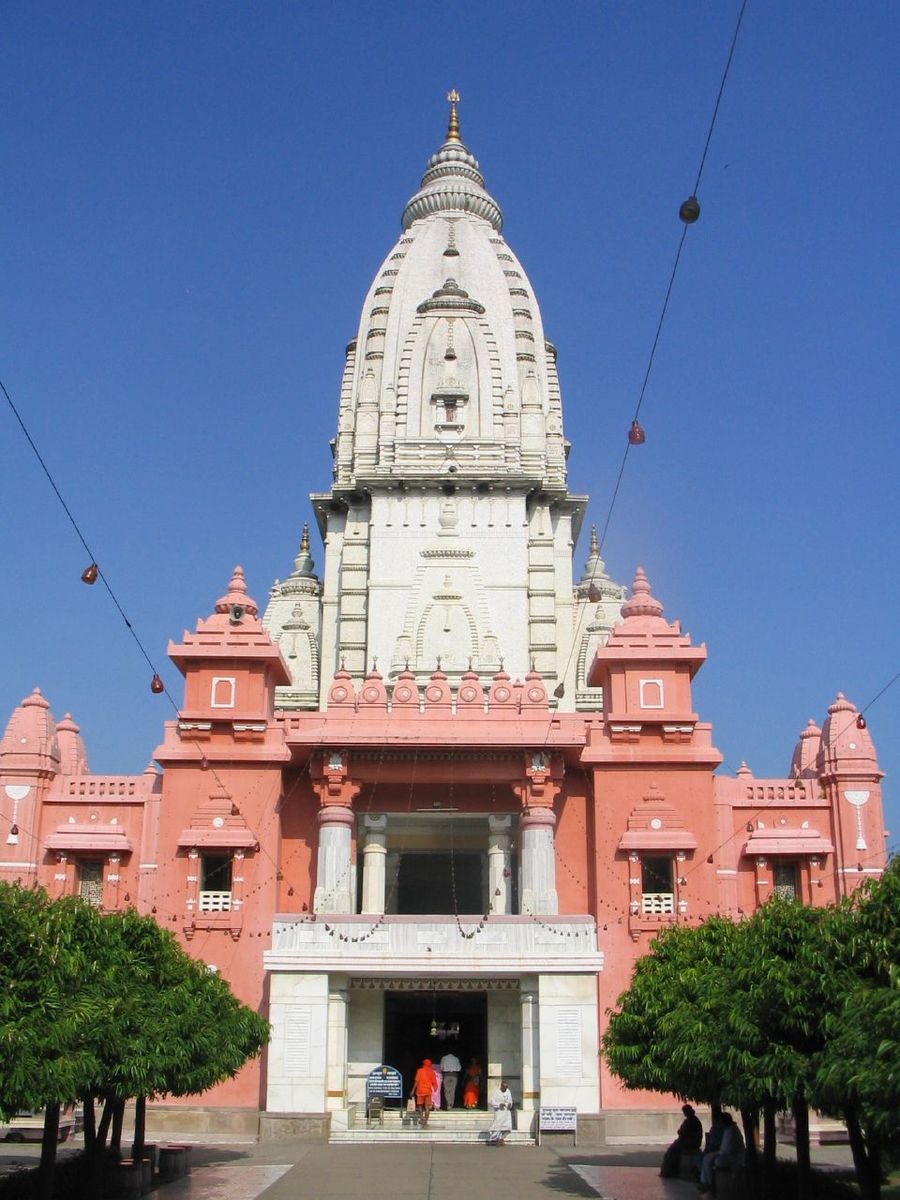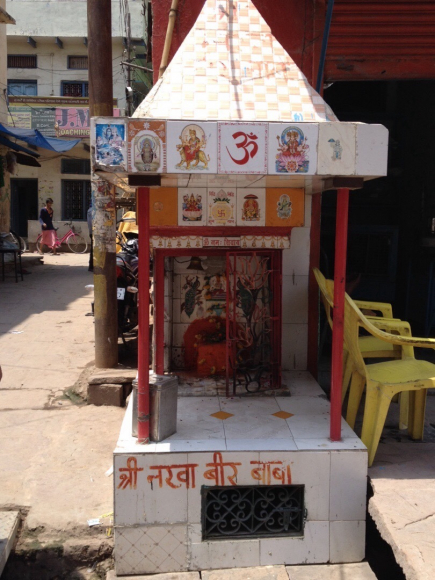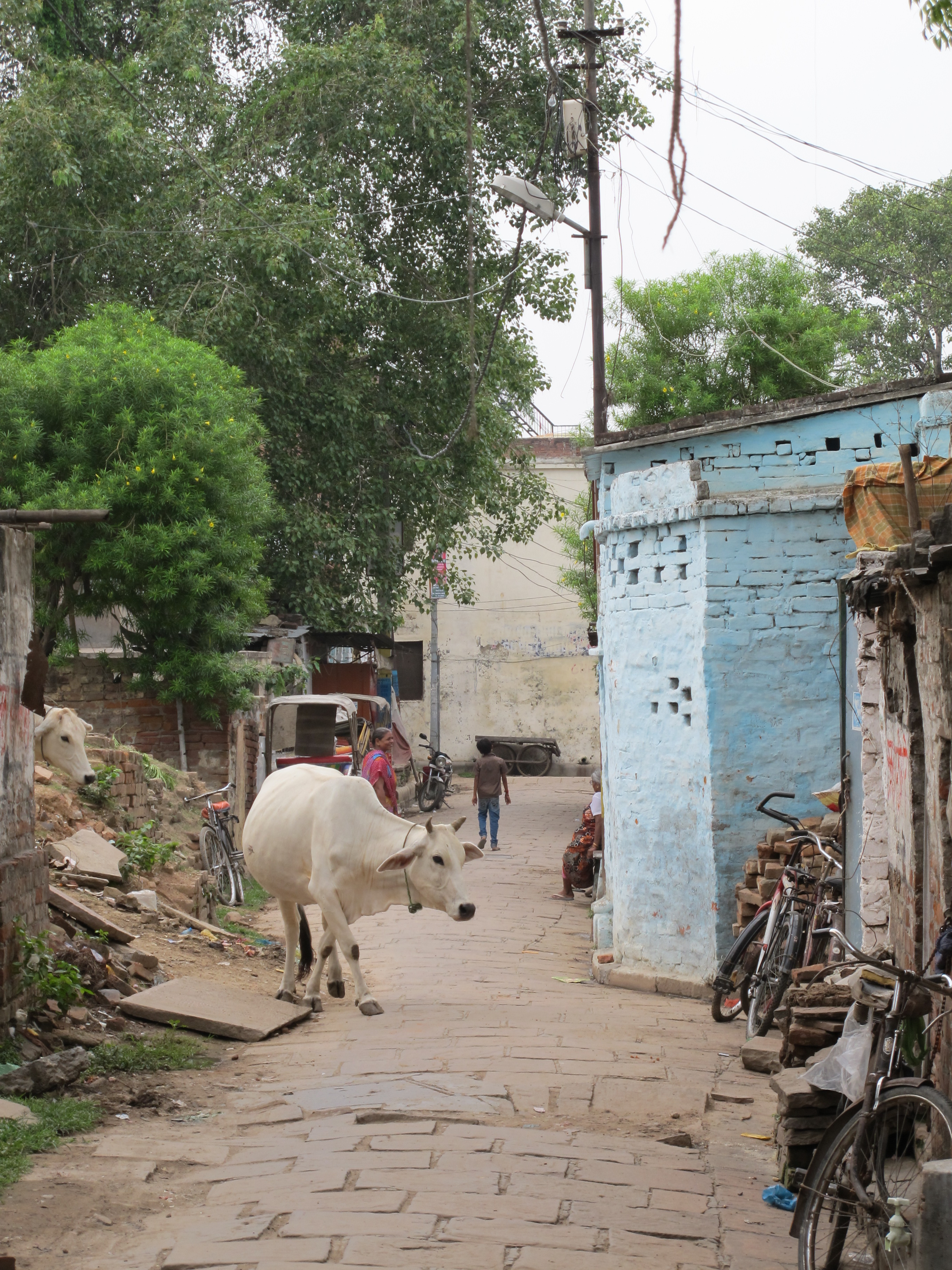In a small alleyway off the Nai Sarak - Luxa intersection, a radiant peach-colored box has attracted two adherents, offering puja at the seat of Vishnu's mount. It's a brisk morning here in the City of Light and the sound of motorcycles and automobile horns are beginning to fill the air again. There will be two more adherents who will pass by, receiving their morning blessing before they're off to work as well. Down the street, three gentlemen are closely seated around another one of these drink machine - sized enclosures. At first sight, it seems that they're performing a ritual for Shiva, but on second glance, they're performing a wholly unexpected one, passing a lit chillum around in equal intervals. When asked, they don't hesitate to tell us that "We smoke ganja here so that we can get Shiva high too." It's an offering that is perhaps a bit unorthodox but also welcomed nonetheless.
These enclosures are known as 'mandirs' in India - little temples that house various deities from the Hindu pantheon, often found next to trees, built into the sides of buildings, or close to water wells. Scholarship associated with the function and study of sacred space in Hinduism has fallen short of providing a comprehensive view of the Hindu religious landscape as it relates to these little temples. Traditionally, the field has put heavy emphasis on grand, monolithic temple spaces as the predominant form of veneration among Hindu adherents. Oftentimes, grand temples such as the Kashi Vishwanath Temple or the Mrityunjay Mahadev Mandir served as examples of Hinduism's primary venerative hotspots. However, the most recurrent and numerous temples are typically no larger than these 1x1x1 meter shelters found throughout the city. Traditional and academic circles have placed an inflated emphasis on monolithic temple spaces as the primary districts of veneration, while also neglecting temple spaces that are highly local, discreet, and much more frequent. Although many of these large temples do play an important role for many Hindus, smaller, 'tiny temples' also play an integral if not central role to many Hindus today.

The diversity of thought, ritual, cosmological systems, and theology shouldn't surprise anyone that temple building and sacred space are also characteristically varied in Hinduism as well. Regardless, a primary function of the temple or mandir, is to house the deity. Within Hinduism, a wide corpus of major and minor traditions exist such as principal deities like Ganesha or Shiva. There are a wide variety of other, lesser known deities too, where many are considered house churches or those gods or goddesses venerated within a family or household.
Over 3,347 individual mandirs were collected and recorded within the metropolitan area of Varanasi. Interviews and photographs were collected in conjunction with a recorded GPS point for the mandir's location. Additionally, we collected information pertaining to the mandir's association with buildings, wells, trees, or anything that would suggest it's location as sacred space. We also recorded how many deities were present at a mandir as well as recording any associative information we thought would be important to tell their story.

By mapping out characteristics of mandirs we identified, our hope is that a more readily comprehensive geography of the city's public temples will emerge. Additionally, more analytical questions can be asked regarding frequency of temple localities that our GIS can play a role in answering.

